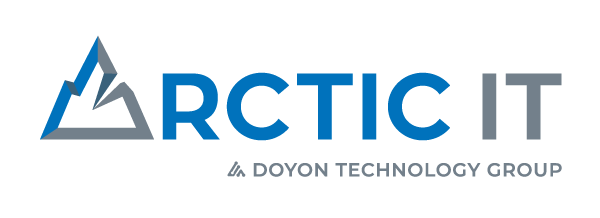In an ever-evolving threat landscape, organizations need robust security measures to protect their assets, employees, and customers. Conducting regular security assessments is a critical step in identifying vulnerabilities, mitigating risks, and ensuring compliance with industry regulations.
In this article, we’ll explore what a security assessment entails, the different types of assessments, the importance of routine evaluations, and how you can effectively leverage Microsoft’s suite of tools in Microsoft 365 (M365) and Azure for self-assessments between third-party evaluations.
What is a security assessment?
A security assessment is a systematic evaluation of an organization’s information systems to identify vulnerabilities, assess risks, and recommend remediation strategies. These assessments provide insights into the security posture of your organization and help ensure that safeguards are in place to protect sensitive data and critical systems. The objectives of a security assessment include identifying vulnerabilities in IT infrastructure, assessing compliance with policies and regulations, evaluating the effectiveness of existing security controls, prioritizing risks based on potential impact and likelihood, and providing actionable recommendations for improvement.
Types of security assessments
Security assessments can take several forms depending on your organization’s needs and goals. Vulnerability assessments focus on identifying and classifying vulnerabilities in systems, networks, and applications. They often involve the use of specialized tools like Microsoft Defender Vulnerability Management.
Risk assessments, on the other hand, evaluate risks to organizational assets by quantifying potential impact and likelihood, with tools like Microsoft Secure Score providing valuable insights. Penetration testing simulates real-world attacks to test the effectiveness of your security controls and often requires external expertise, although Microsoft offers automation tools that can assist.
Compliance assessments help to ensure adherence to regulatory requirements such as GDPR, HIPAA, or CMMC, and tools like Microsoft Purview Compliance Manager simplify the process.
Configuration assessments examine your system and application configurations to ensure they align with security best practices, utilizing tools such as Azure Security Center and Microsoft Intune.
Why regular assessments are a must
The cybersecurity landscape is constantly changing, with new vulnerabilities and attack vectors emerging daily. Regular assessments are crucial for staying ahead of potential threats, maintaining compliance with industry regulations, and protecting sensitive data and critical assets. These evaluations also ensure continuous improvement in your security posture and build confidence among customers and stakeholders. Without routine assessments, organizations risk falling behind on emerging threats and could face severe consequences – including data breaches and regulatory penalties.
Bolster your security routine with third-party assessments
While self-assessments are invaluable, third-party security risk assessments offer an unbiased perspective and expertise that can be difficult to achieve internally. Partnering with an external auditor, at least once a year, helps ensure that blind spots in your self-assessments are identified and that your organization’s security controls are evaluated against industry standards.
Third-party assessments also provide actionable insights from experienced professionals, helping to validate and refine your internal security practices. These external evaluations complement self-assessments by providing depth and rigor that internal resources may lack.
Conducting self-assessments with Microsoft 365 services
Between annual third-party assessments, self-assessments provide a practical way to maintain and enhance your security posture. Microsoft’s robust suite of tools in Microsoft 365 offers comprehensive capabilities to help you conduct these evaluations effectively. They are designed to identify vulnerabilities, ensure compliance, and improve configurations, making them ideal for self-assessments. These tools include:
- Microsoft Secure Score is a powerful tool that provides a quantified view of your organization’s security posture. It offers improvement recommendations based on best practices and is easily accessible through the Microsoft 365 Security & Compliance Center.
- Microsoft Defender Vulnerability Management scans for vulnerabilities across devices, apps, and systems, providing remediation guidance to reduce exposure to threats.
- Microsoft Purview Compliance Manager helps to assess your compliance with various regulations and standards, offering templates and improvement actions tailored to your organization’s needs.
- Microsoft Defender for Office 365 evaluates email and collaboration security, identifying threats such as phishing and malware.
- Exchange Online Protection analyzes email hygiene and security policies to highlight gaps in spam and malware filtering.
- Microsoft Intune ensures device compliance against security policies and evaluates endpoint configurations.
Leveraging Azure tools for security self-assessments
Azure also offers a range of tools for conducting self-assessments. Here is a synopsis of these tools and how they work:
- Azure Security Center, now known as Microsoft Defender for Cloud, provides a unified view of security across Azure resources and hybrid environments, offering recommendations to improve security configurations.
- Azure Active Directory conducts identity and access assessments, highlighting risks such as weak passwords, unprotected accounts, and improper permissions.
- Azure Policy ensures compliance with internal and regulatory requirements by evaluating resource configurations against defined policies.
- Azure Monitor tracks activity logs and metrics to identify unusual patterns or potential security incidents.
- Log Analytics with Microsoft Sentinel enables advanced threat detection and analysis, providing a centralized view of logs and alerts.
- Azure Advisor offers recommendations for security, cost, and performance optimizations, helping you to fine-tune your Azure environment.
Steps to conduct a security self-assessment
The first step in conducting a security self-assessment is to define the scope. This involves identifying the systems, applications, and data to be assessed and determining the objectives and desired outcomes. Once the scope is defined, leverage Microsoft tools such as Secure Score, Compliance Manager, and Azure Security Center to identify your organization’s vulnerabilities, compliance gaps, and misconfigurations.
After collecting data, analyze the results to prioritize findings based on risk level, impact, and ease of remediation. Dashboards and reports from Microsoft tools provide detailed insights to support this analysis.
Following the analysis, implement the recommended actions provided by Microsoft services. Many tools include automation features that expedite remediation, making it easier to address vulnerabilities and compliance gaps. Documenting the findings, actions taken, and any remaining gaps is essential for accountability and transparency. Share these results with relevant stakeholders to ensure alignment and foster continuous improvement.
Finally, use your assessment results to inform future security strategies and schedule follow-up evaluations to track progress and address new risks.
Get started with Microsoft security assessment tools
Regular security assessments, both self-conducted and third-party, are essential for maintaining a strong security posture. By leveraging Microsoft’s comprehensive suite of tools and services, organizations can efficiently identify and address vulnerabilities, ensure compliance, and protect their assets against evolving threats. Integrating these assessments into your organization’s security framework empowers you to stay proactive, agile, and resilient in the face of cybersecurity challenges.
If navigating Microsoft’s suite of security assessment tools feels overwhelming, contact Arctic IT today. We are here to help you make these tools work for your organization.

By Paul Clark, Director of Security & Cloud Architecture at Arctic IT

